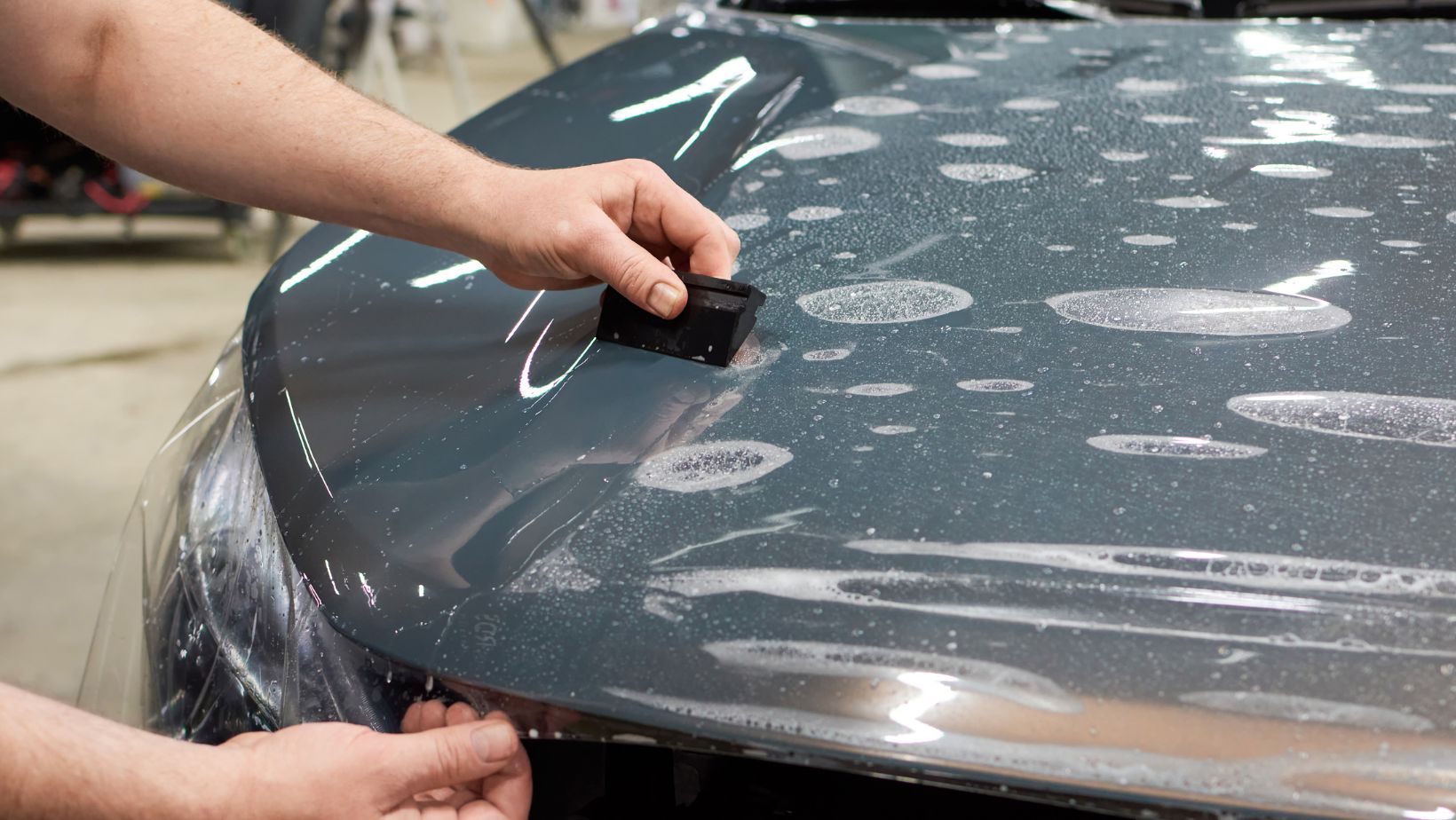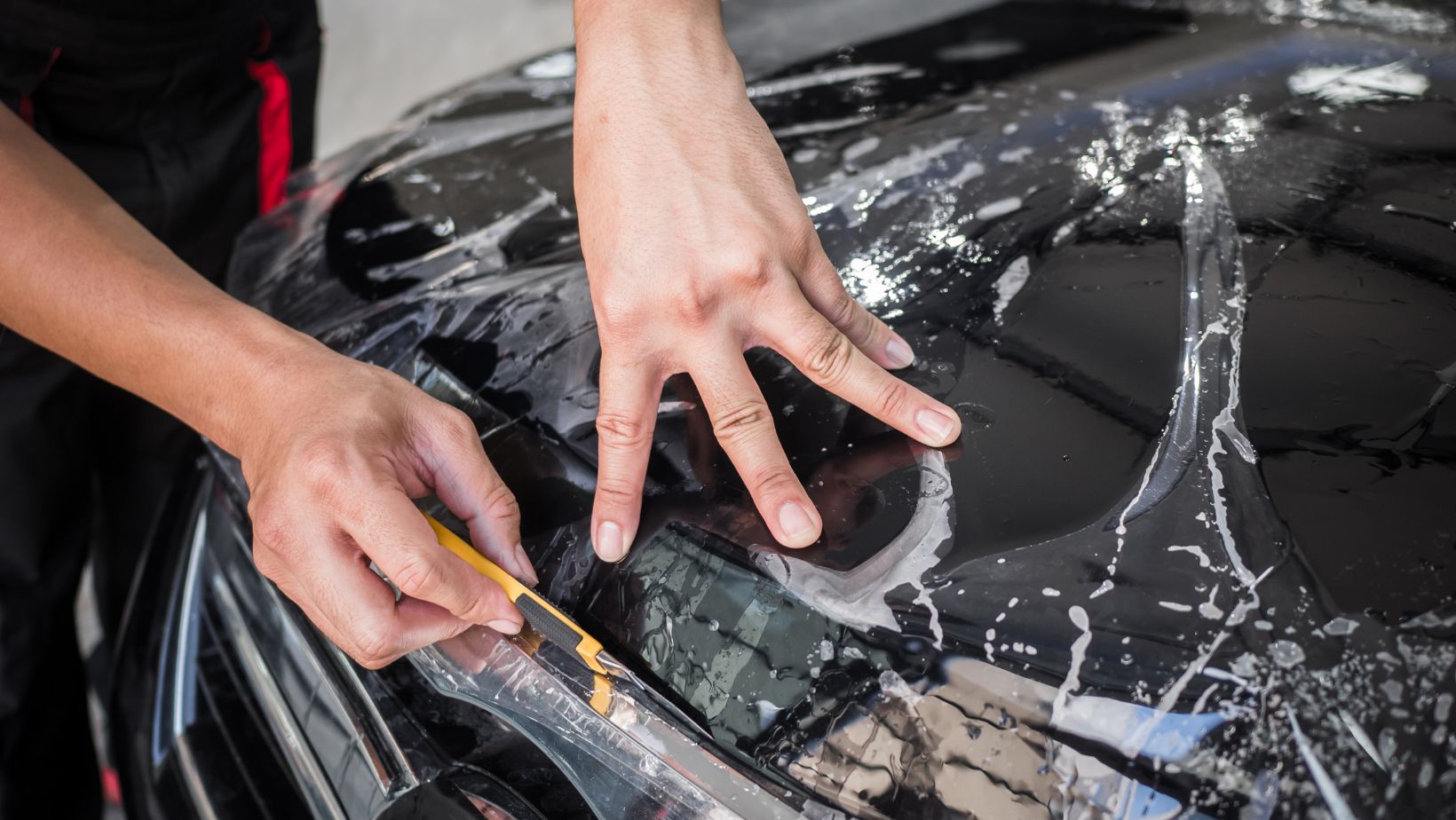Paint Protection Film acts as a shield that guards your vehicle from harsh road conditions. Statistics show that insurance claims contain eligibility errors about 20% of the time. This highlights why proper protection of your investments matters so much. Car owners who skip preventive measures often face expensive paint repairs, much like healthcare providers deal with claim denials.
This piece walks you through the real purpose of paint protection film and how it keeps your vehicle’s exterior safe. The best paint protection films work through advanced thermoplastic polyurethane technology and come with self-healing properties. We’ll help you learn about the science behind these features. Looking for “paint protection film near me”? You’ll find tips to locate quality installation services around you. The logic is simple – 92% of Americans protect their health with insurance, so your car deserves the same level of protection from damage that can hurt its value and looks.
What is Paint Protection Film?
Rock chips and scratches can really mess up your car’s looks. Paint Protection Film (PPF) is here to help. This amazing product has revolutionized the way we protect our cars’ exteriors by creating an invisible shield against everyday driving damage.
Definition and Purpose
Paint Protection Film is a clear thermoplastic urethane film that goes on your car’s painted surfaces to keep the paint safe. You can think of it as invisible armor – it’s completely clear but tough as nails. The film is 6 to 8 mils thick, which is a big deal, as it means that it’s much thicker than ceramic coatings.
This protective shield does several things at once. It guards your car’s paint from chips and scratches that rocks and road debris cause. It stops swirl marks from washing, blocks stains from acidic contaminants, and prevents UV rays from oxidizing your paint. PPF stands out from other protection methods because it can – the film bounces back to its original shape after getting dents or scratches.
PPF works by soaking up and spreading out the force from impacts. This keeps the paint underneath safe from damage. This feature makes PPF perfect at protecting areas where flying debris usually hits.
Common Uses in Automotive Industry
PPF has become the go-to protection method for both new and used vehicles. Installers focus on the parts that need the most protection.
Most commonly, PPF is installed on:
- The hood and front bumper (primary impact zones)
- Front fenders and headlights
- Side mirrors (frequently sideswiped)
- Rocker panels and lower doors
- Rear wheel arches (where debris kicks up)
- Any high-contact areas prone to scratches
These parts get PPF because they take the most hits from road debris, construction zones, and other vehicles. PPF makes a lot of sense if you drive on highways or gravel roads often.
PPF isn’t just for regular cars anymore. People use it on motorcycles, RVs, airplanes, and even cell phones, electronics screens, and other scratch-prone surfaces.
Here’s a cool fact: PPF started as military tech. The military created it as “helicopter tape” to protect rotor blades during the Vietnam War. It made its way to cars in the early 1990s.
Types of paint protection film available
The PPF market has grown huge, with options to match what different car owners want.

Each type has its own benefits based on your priorities.
- Clear Glossy PPF leads the pack as the most popular choice. It makes your car shine while keeping it safe. Your car’s color looks deeper and maintains that showroom sparkle. You can barely see this standard option once it’s on, which keeps your car looking original.
- Matte Finish PPF works great for people who love that non-shiny look. These films keep the matte appearance while protecting just as well. They work perfectly on factory matte finishes or to give a glossy car that cool matte look.
- Colored PPF lets you get creative with your car’s look. You can change your car’s color for a while without touching the original paint. The factory paint stays perfect when you remove it – perfect for trying out new colors.
- Textured PPF brings both protection and style. You can get finishes like carbon fiber, forged carbon, and damask steel that add character to your car. Some car lovers even use textured PPF inside their cars.
- Self-Healing PPF shows off the best tech in the industry. These advanced films fix small scratches and swirl marks with just some heat from sunlight or warm water. The molecules reshape themselves, keeping the film clear for more than ten years.
Today’s PPF options work for everyone – from people who just want protection to car enthusiasts who love to customize their rides.
The Science Behind Paint Protection Film
You might wonder what makes paint protection film stop rock chips from damaging your car’s paint. The answer lies in its amazing structure and composition. This technology protects your car in ways you can’t even see.
How PPF Absorbs Impact
Paint protection film’s magic comes from how it absorbs impacts. PPF works differently than regular vinyl wraps or ceramic coatings. It absorbs and spreads energy from impacts throughout the film. Your vehicle’s painted surface stays protected.
Your paint stays safe when rocks or road debris hit your vehicle at highway speeds because the film takes the hit. Quality PPF can withstand impacts as high as 120 mph without much damage. That’s faster than most sports cars can go!
Engineers designed the film’s multi-layer structure with protection in mind. The middle layer works like an energy distributor. When something hits the film, this layer absorbs the shock and spreads it around. Think of a tiny shock absorber that guards your car.
The film acts as a “sacrificial layer” that takes damage to protect your paint. This protective barrier blocks:
- Flying rocks and road debris
- Bug splatter and bird droppings
- Minor abrasions from washing
- Environmental contaminants
Role of Thermoplastic Polyurethane (TPU)
Modern paint protection film’s secret weapon is thermoplastic polyurethane (TPU). This amazing material gives PPF its protective superpowers.
TPU stands out for its flexibility, durability, and resistance to oils, greases, and abrasion. These features make it perfect for automotive protection since cars face these challenges every day.
TPU’s chemical structure makes it special. The material can stretch and bend without breaking or cracking. Picture something tough enough to resist scratches yet flexible enough to wrap around your car’s complex curves.
Sun exposure won’t yellow TPU like it did with older paint protection films. The film stays clear even after years in the sun.
A good TPU-based film installation lasts 7-10 years with proper care. That’s remarkable given what your car’s exterior faces daily. TPU applies easier than older PVC films and won’t harm your original paint when removed.
Self-Healing Properties Explained
Modern paint protection film’s most amazing feature lets it repair itself. Yes, you read that right!
Elastomeric polymers in the film’s top layer create this seemingly magical property. These polymers work like molecular memory foam. They remember their original shape and return to it with heat.
Minor scratches or swirl marks disrupt the film’s molecular structure. Heat from sunlight, warm water, or engine heat makes these polymers more flexible. They flow back to their original position and the scratch disappears!
The self-healing process works best between 60°C and 80°C (140°F-176°F). This means:
- Parking in sunlight on a warm day
- Rinsing with warm water
- Using a heat gun carefully for faster results
Minor scratches often vanish within 30 seconds to 5 minutes after heat exposure. The self-healing can restore up to 90% of the film’s original look.
Hydrogen bonding makes this possible at the molecular level. These bonds work together to give the material strength and excellent self-healing abilities.
Understanding these scientific principles helps explain why quality matters when looking for the best paint protection film. This technology keeps improving to offer better protection and longer-lasting results for your vehicle.
Conclusion
Paint Protection Film works as an amazing shield that protects your vehicle from daily road damage. This piece explores how this transparent armor uses its advanced multi-layer design to protect your car. A scratch-resistant top coat combines with a flexible TPU middle layer and strong adhesive to create a barrier. This setup absorbs impacts while keeping your car’s looks intact.
Your car needs protection just like your skin needs sunscreen in harsh sunlight. PPF gives your vehicle that invisible but tough shield against road debris. Good maintenance helps keep that showroom shine lasting years instead of months.

